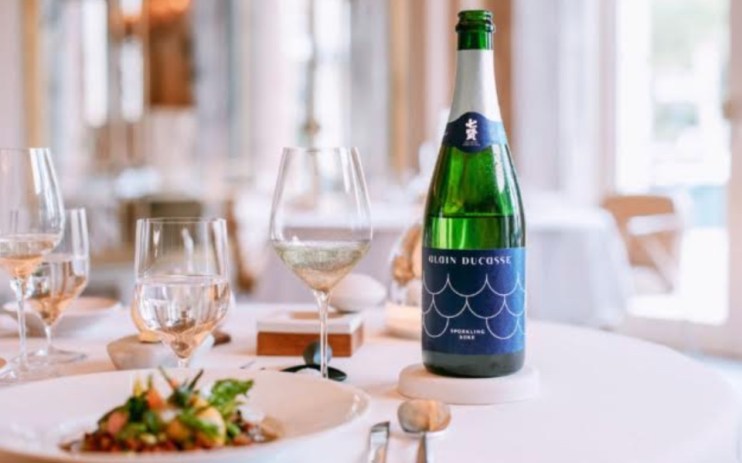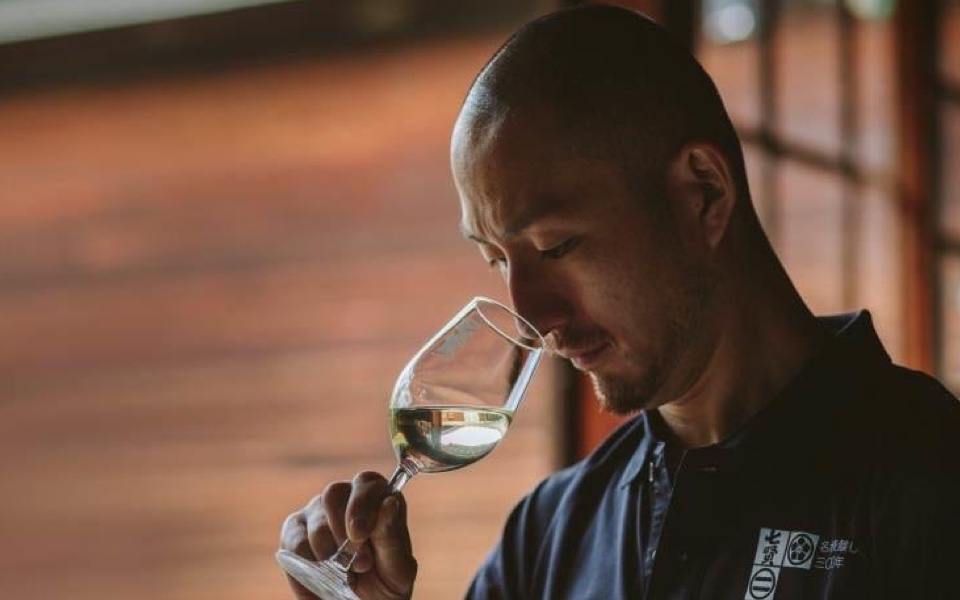Sake fizz isn’t just big in Japan: Here’s all you need to know

Bottle-fermented sparkling sake – “Awasake” or foam sake – is seeing a surge in popularity outside of Japan. To underline the point, French masterchef Alain Ducasse has partnered with Japanese brewery Shichiken in Yamanashi to launch a new sparkling variety that offers an international taste journey in which “Japanese elegance meets French art of living”.
Shichiken, which goes back to 1750, released its first sparkling sake in 2015 (“Yamano Kasumi”). Then came “Hoshino Kagayaki” (2016), and “Morino Kanade” (2017), matured in a Suntory Hakushu whisky cask.
Master brewer Ryogo Kitahara uses waters from Hakushu and Mount Kaiko Megatake to “craft a unique sensory journey”. Following inspiration from Gerard Margeon, Chef Sommelier for Ducasse Paris, he matured the latest sake in cherry barrels to create a new kind of gastronomic sake with effervescence brewed in the sacred forest of Japan’s southern Alps.
Like other Shichiken (meaning, bamboo grove), Morino Kanade, meaning a “symphony of the forest,” is brewed with premium rice grown locally in Hokuto.
“It goes well with Koshu beef confit,“ says Tsushima Kitahara who represents the thirteenth generation of brewers at Yamanashi Meijo Co.’s Shichiken brewery.
Size matters with gourmet sparkling sake. The smaller the bubbles (“puchi puchi”), the fewer the impurities and the higher the quality. At the last International Sake Challenge in Tokyo, the sparkling wine made by the Dewazakura Sake Brewery in Zendo City in Japan’s Yamagata Prefecture won first prize.
There is no sugar or distilled alcohol added to sparkling sake. The bubbles are formed with carbon dioxide which derives from the natural fermentation during brewing. Awasake must be made by a second fermentation, and not by carbonation.

The development of the technique to make bottle-fermented wine was pioneered by Noriyoshi Nagai, of Nagai Sake in Gunma. Nagai first started experimenting with bottle-fermented sparkling sake in 2003 and in 2016 nine breweries came together to create the Awasake Association. Now there are nearly 30 members.
The styles and quality of Awasake range from delicate Brut Nature with ginjo character, to full-bodied, rich demi-sec. Some are floral and others savory.
Good examples of the increasing range of high quality Japanese fizz are Mutsu Hassen Dry Sparkling from the Hachinohe Brewery, Aomori, Nanbu-Bijin in Iwate, Fukushima Ninki-Ichi, Nagai’s Mizubasho Yuki-Hotaka and Mashumi from the Miyasaka Jozo Sake Brewery in Nagano.
Each one is approved by the Awasake Association with its hologram seal of authentication. Now is the time to join the growing number of connoisseurs of a drink that’s no longer just big in Japan.